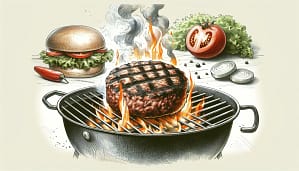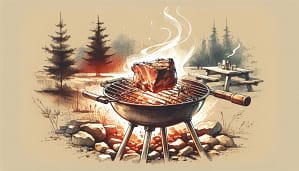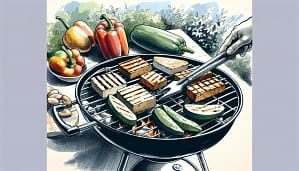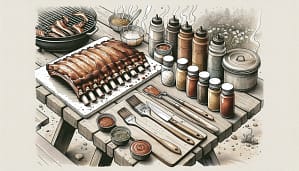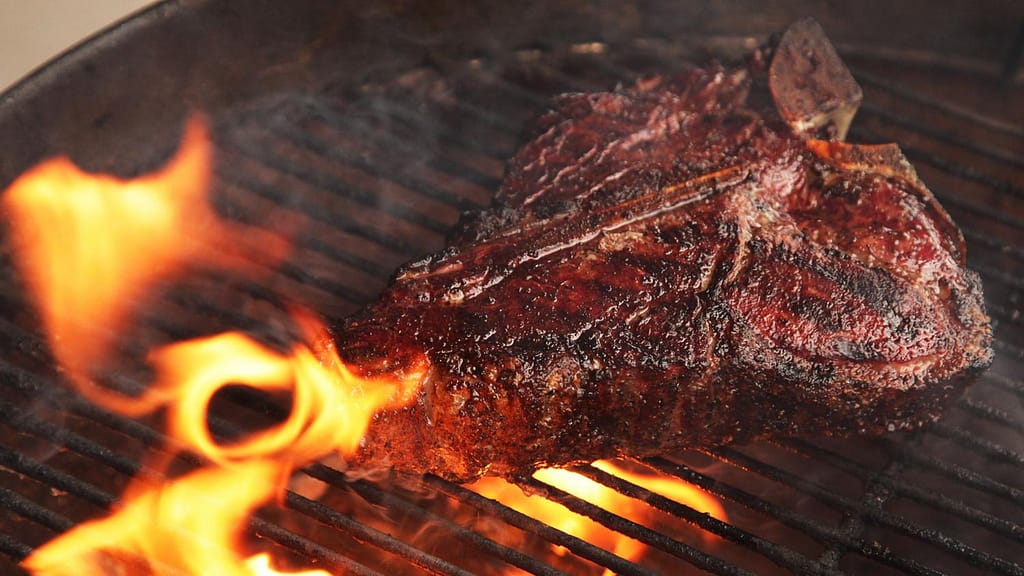
We all love to spend time with family and friends, it’s not only fun but also a nice refresh to give us, everyone loves to cook on their own when going out, the most delicious of which is barbecue food and side dishes. Then learn about barbecue grills that you can use when going on an outing or at home.
In summer, from outdoor events to backyard barbecues, now is the best time to invest in a grill — and there are many alternatives available, including pellet grills, traditional charcoal grills, and gas grills.
Choosing the best grill for you necessitates consideration of a variety of aspects, including fuel type, size, pricing, style, and additional features. All of this can be daunting, so we’ve compiled a list of our top ideas for selecting the perfect fit for your patio, which we update on a regular basis. Here are a few important features to think about.
Fuel type
There are hundreds of grills to choose from, however, narrowing down your choices might be difficult. Choosing the appropriate fuel for your fire is a good place to begin.
So, what was the best barbecue grill for you? The solution is contingent on the type of cooking you do and the level of convenience you desire from your barbecue. Every model has benefits and drawbacks, so understanding their major traits will help you choose a barbeque perfect match.
Charcoal Grills: A charcoal barbecue provides the characteristic campfire smoke connected with grilling. Charcoal grills produce Smokey heat by burning charcoal briquettes or lumps of charcoal. It takes more time to fire the briquettes and heat the grill than it does on a gas grill, and they aren’t as exact when it comes to cooking, but you can’t beat the distinct flavor and crispy burn patterns.
Charcoal grills are lightweight and portable, making them ideal for summer excursion, However, there is a long cleanup process after cooking because you must wait for the briquettes to cool before disposing of the ash.
Pellet Grills: In recent years, pellet grills have hit the mainstream. Most types burn a variety of wood pellets and have an electric component for Heat control. Pellets produce delicious output with a lot of smoky, wood-fired flavor, but they’re more costly to replace than charcoal briquettes or gas cans.
Pellet grills have a hopper on the side where the wood pellets are stored. Once you’ve started the grill and selected the temperature, a revolving auger connected to the hopper moves the pellets around before being put into the grill grates to smoke your meat.
Gas Grills: Gas grills are often designed in a trolley style and use a liquid fuel tank or a natural gas conversion kit that is linked to your flat’s natural gas supply line. Because liquid propane isn’t tied to a gas line, it was the most popular suggestion because it allows you to relocate your barbecue around the patio. Although it is more expensive and requires replenishing, many grills can tolerate both types of gas. Gas gives superb fire control and uniformly delivers heat throughout the whole cooking surface, allowing you to taste the meat rather than the heat.
Electric Grills: Whether you want to enhance your grilling skills but don’t want to deal with the effort or inconvenience of cooking on a traditional grill, an electric grill may be the way to go. the grilling option is suitable for both outdoor and indoor grilling, as well as being portable and simple to clean. They’re available in a variety of dimensions, with retractable lids and convertible hoods.
Smoker: Smoking is another alternative for outdoor cooking, and it produces the same smoky flavor as charcoal grilling. A smoker cooks food gently by using slow and diffuse heat. Such vertically upright units have hooks or numerous grates where food can be placed or stored while the unit cooks slowly.
Grill Size
The grill with two or more burners allows for better heat control and flexibility. When this comes to barbecue grills, the most significant measurement is surface area (measured in square inches). A 450 to 500 square-inch grill, for example, can cook up to 24 burger patties simultaneously.
The dimension of a grill should be addressed in addition to the cooking area. Most barbecues have removable or collapsible side racks. Makers suggest the grill be placed 2-3 feet away from the home and other explosive items as a safety precaution. Prior to purchasing, make sure your deck or patio can fit the wingspan of your new barbecue.
Cooking Area
You’ll want a grill that has sufficient surface space to prepare the meals you usually grill, as well as the flexibility to add more foods on special occasions. Here is a general rule: estimate how many burners you’ll need. Get a grill with at least one more burner. Here are a few pointers to consider when selecting a grill size:
Examine the burners themselves to see if they’re big enough to cover the full cooking area. Even heating is crucial. When using a gas grill, keep in mind that you don’t have to utilize all of the burners at the same time. They also have customized zones for various types of cooking as well as super-hot infrared zones for searing meat.
Examine the grill’s highest overall temperature; a decent grill should be able to achieve at least 600 degrees Fahrenheit. Several grills feature extra side burner attachments so you may alter your arrangement if you wish to cook different foods at once.
BTU – British Thermal Units
BTUs are a measurement of gas output and how much heat each burner can produce. But keep in mind that BTUs are an excellent way to assess power and heat, but not efficiency. Look for a grill with a wide temperature range or additional features like ultra-hot infrared burners if you want to save energy.
Materials & Durability
The majority of grills, whether they are charcoal, gas, smokers, or electric, will feature a steel structure. It’s the material we rely on to withstand the high temperatures and tremendous stress that cooking necessitates. Traditional black grills are flat-painted or powder-coated, whereas more modern and high-end grills are totally made of stainless steel. Chef-quality commercial-grade 304 stainless steel is used to make the greatest grills on the market, so they’re excellent and easy to clean.
While cast aluminum does not rust, it does tarnish over time. Cast iron is incredibly sturdy and hefty, although it is prone to rust if not properly painted.
Enamel-bonded steel: Enamel-bonded steel, like cast iron, will not rust unless it is chipped. Examine it carefully for any scratches.
Stainless steel: It won’t stay gleaming indefinitely, but it will last you a long time. Examine the metal’s alloy composition, as this will affect the grill’s heating. Dust, grease, and stains will show up easily on stainless.
Grill Features To Consider
Electronic Igniters
Users may instantly ignite grill units with the push of a button, eliminating the trouble and time associated with lighter fluid. It’s also a superior option in terms of security.
Burners
The amount of heat can be controlled via burners while grilling.
Side Burners
Side burners provide an extra cooking area and a lower temperature, great for grilling vegetables, for items that don’t require direct heat.
Infrared Burners
Infrared burners achieve extremely high levels of heat for quick searing. Gas-fueled grills, like propane and natural gas grills, can be equipped with infrared burners.
Thermometer
Thermometers are essential in determining the internal temperature of your grill unit.
Grates
Typically constructed from porcelain enamel or stainless steel for easy clean up and ideal heat retention, grates provide the necessary surface in order to grill food.
Rotisseries
Rotisseries are useful when cooking bulky, large foods such as whole poultry. A rotisserie evenly cooks food white rotating.
